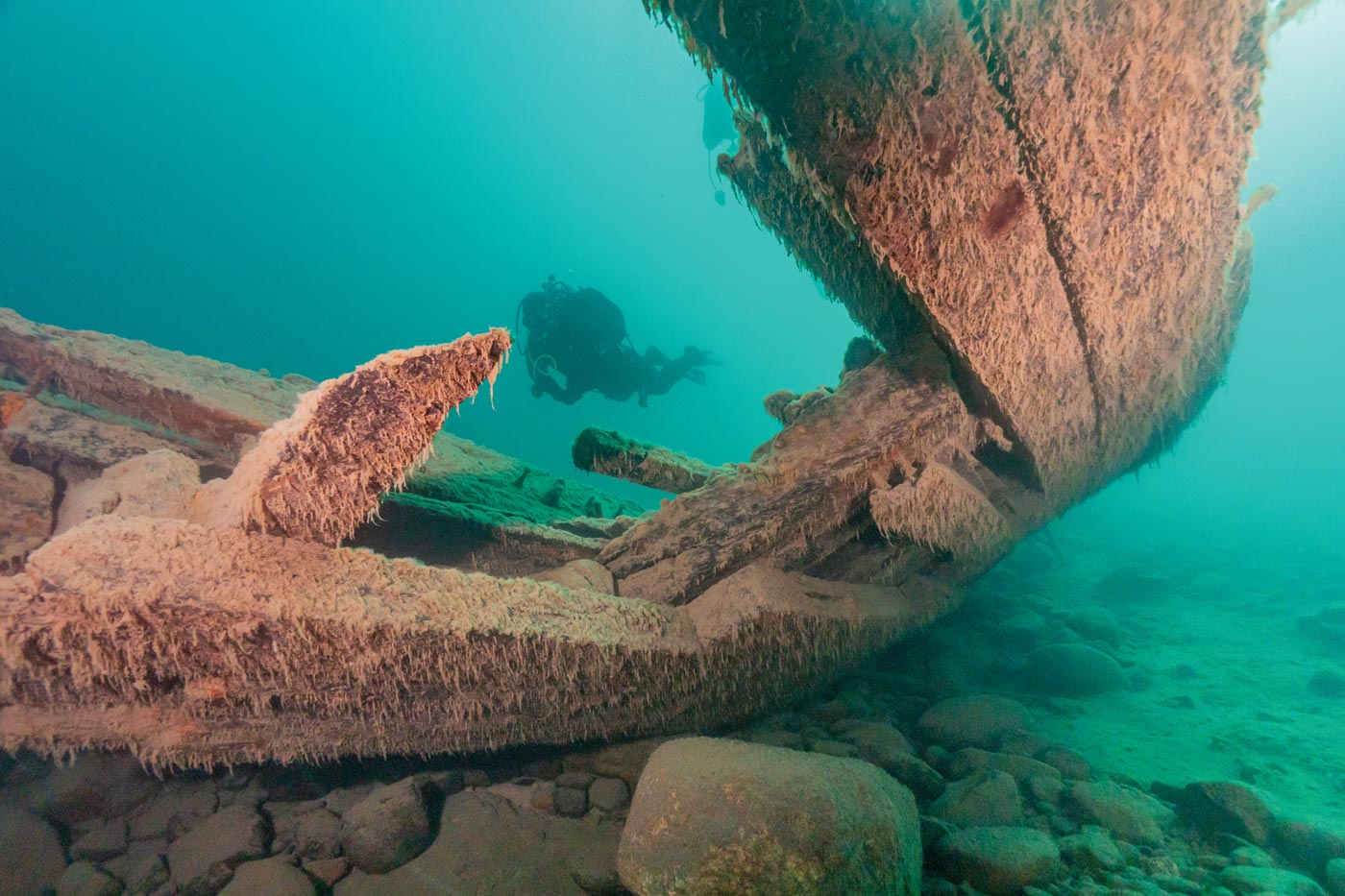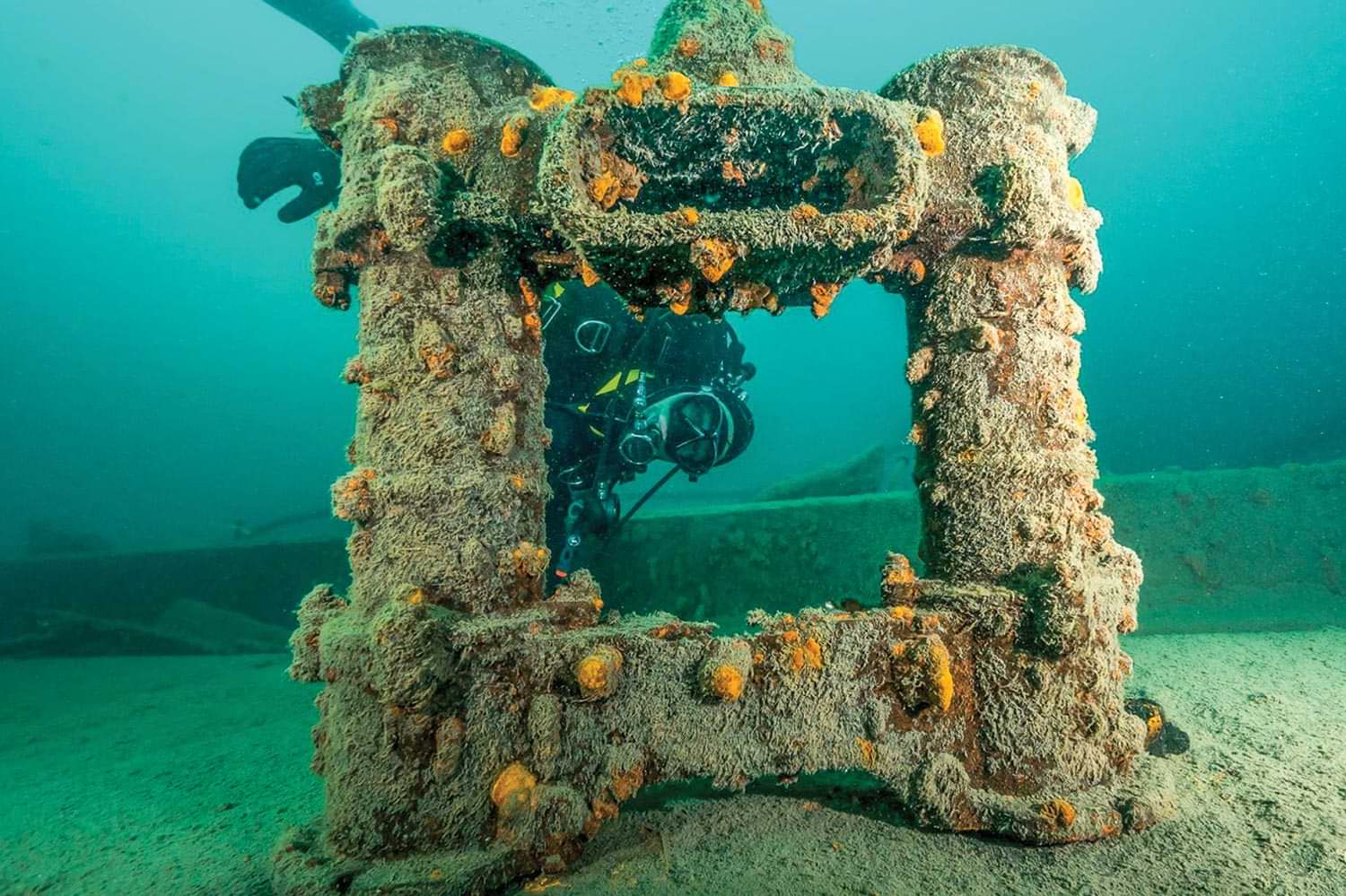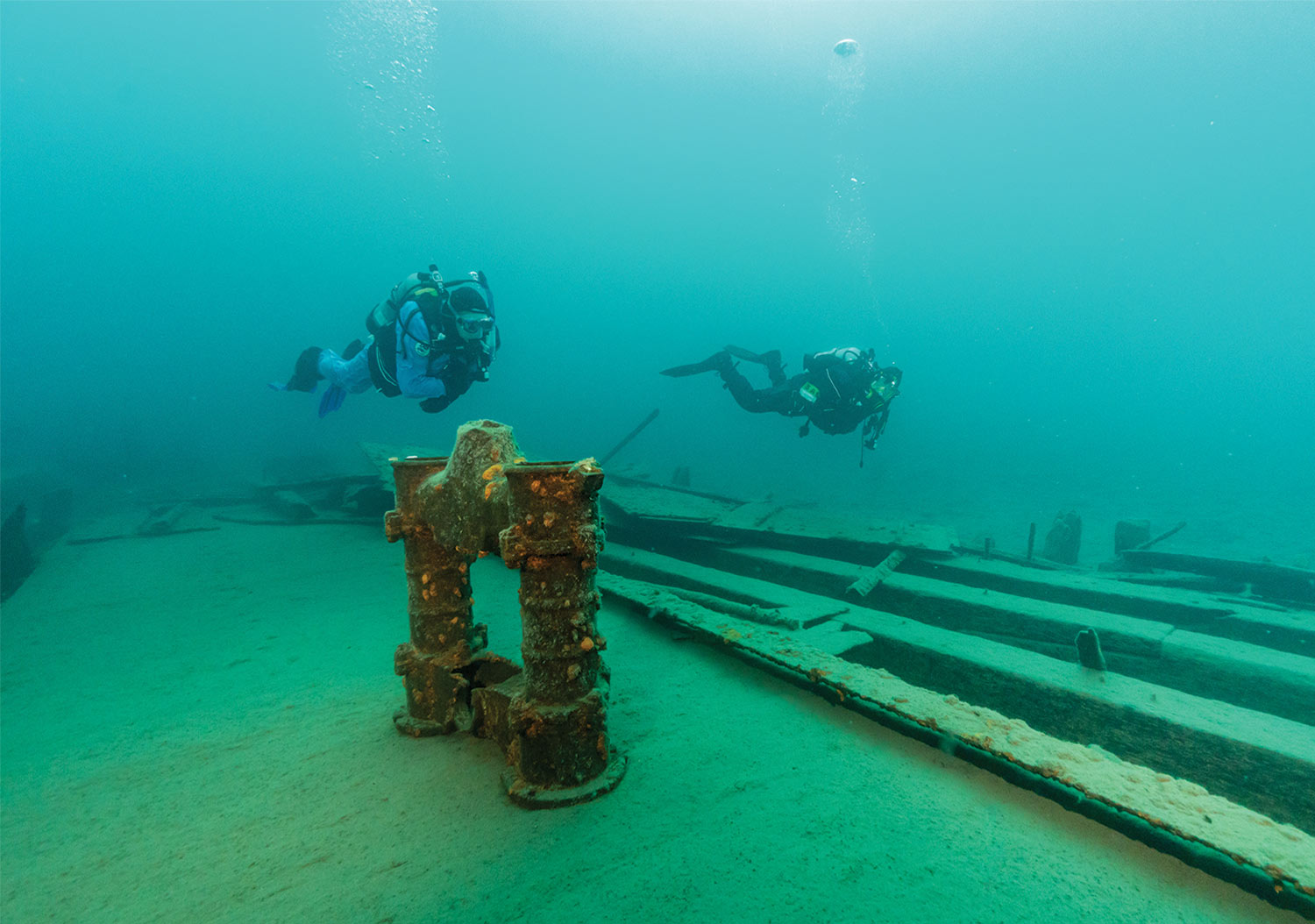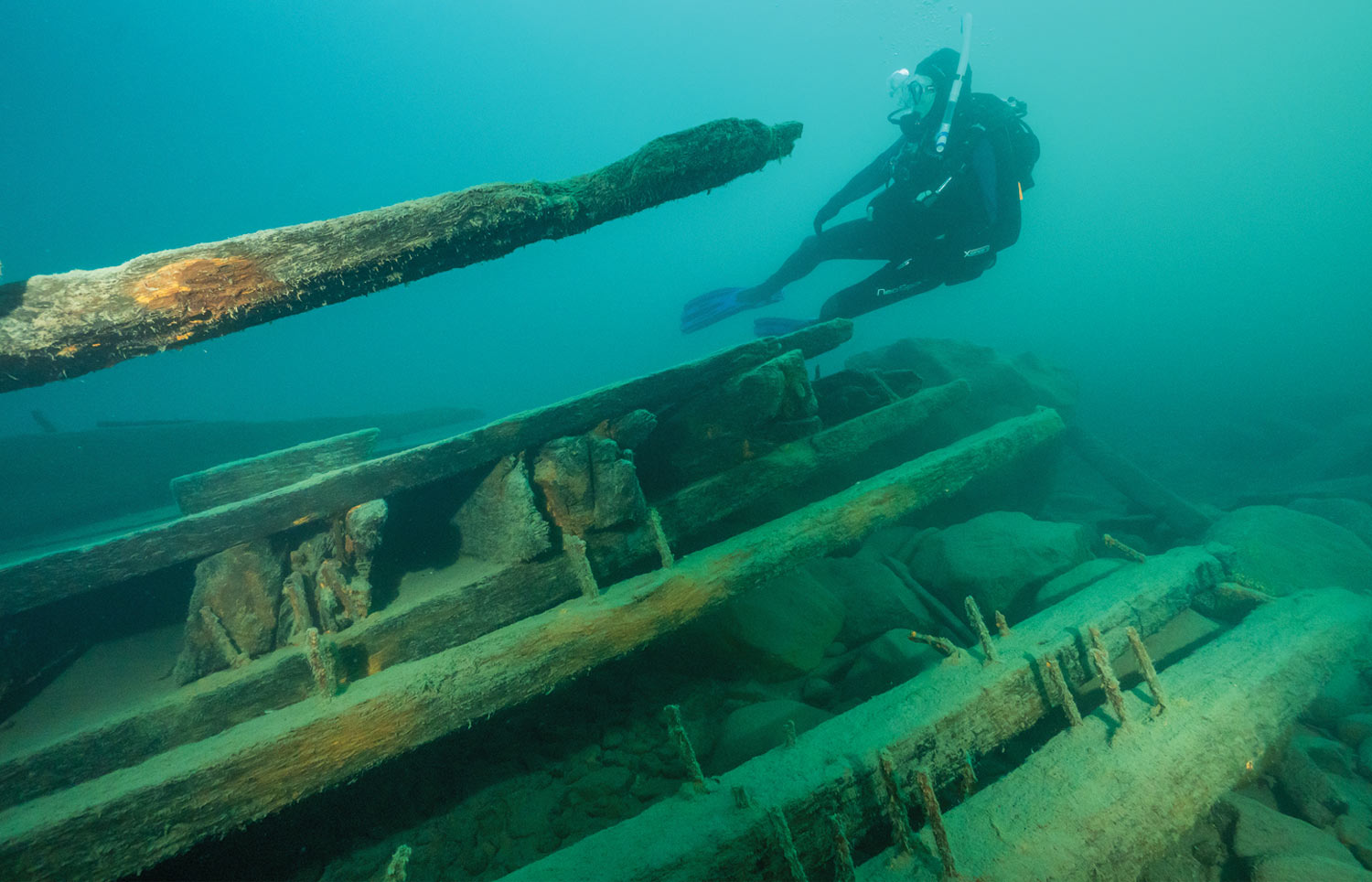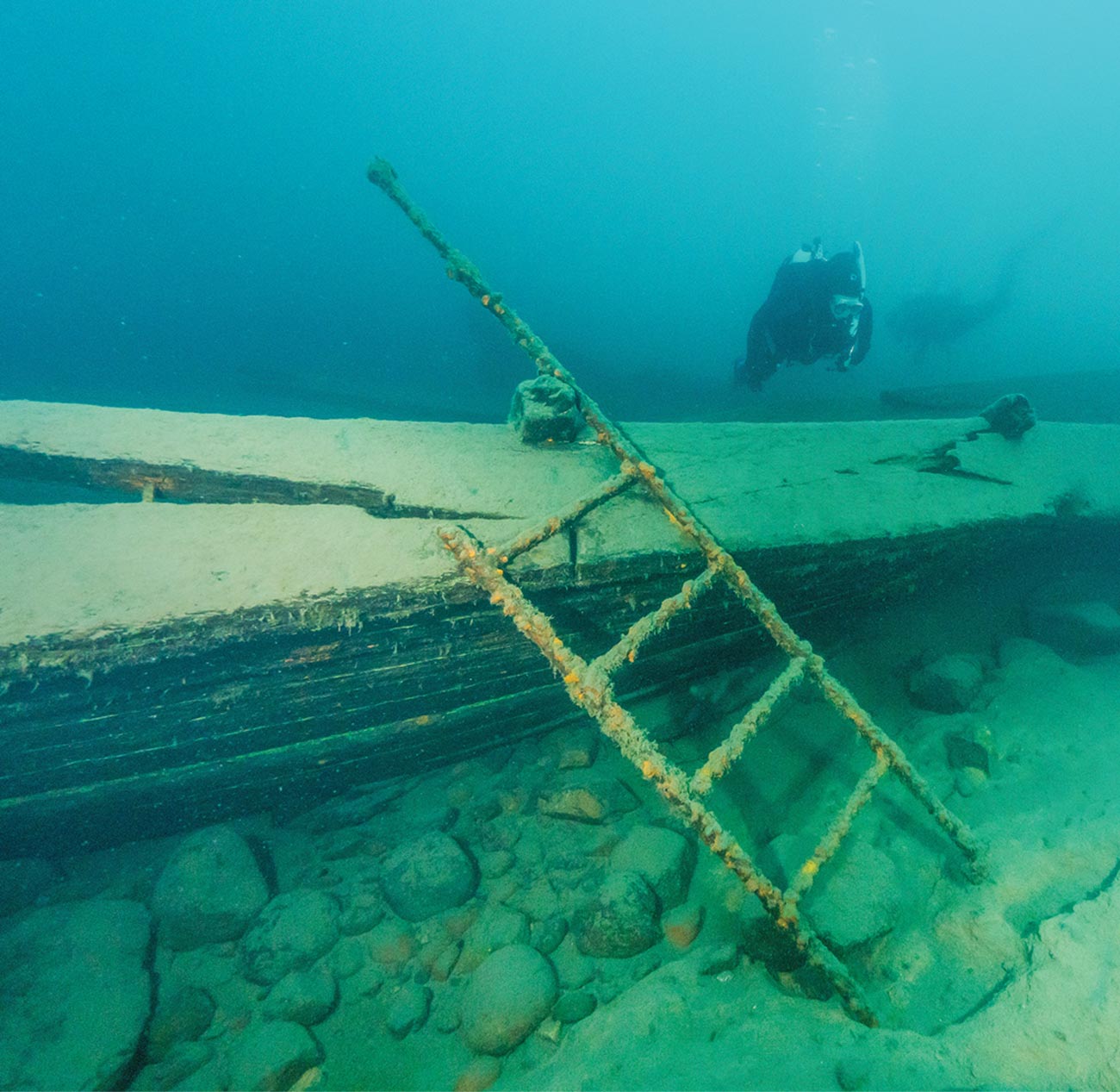To The Bitter End
Remaining aboard the sinking SS Hesper
Fossils are the greatest gateway into pre-history that we have today. To find physical proof of a long-extinct living organism is something of a significance that cannot be overstated. From the greatest of tyrannosaurus-rex skulls to the smallest of trilobites, their fossils are a tangible testament of their historical existence, each of them saying, “I was here.” And this goes for more than just fossils, but the skeletons of sunken ships too!
The number of shipwrecks throughout the Great Lakes is almost “unfathomable,” and so is the number of explorable shipwrecks. And in Lake Superior, just along the Silver Bay Harbor of Minnesota, is a ship known as the SS Hesper with an interesting history. With the cold fresh water of the Great Lakes having the perfect conditions for preserving the condition of sunken wooden ships, the remains of the Hesper are no less than the fossils of a ship just waiting for divers to come explore her ruins.
At the time of Hesper‘s construction, the vessel’s owners were undecided as to whether it should be called the Hesper or Hesperus (the latter having bad connotations relative to Longfellow’s poem “The Wreck of the Hesperus.”) When it was found that the name Hesper had been cut on its capstan, they kept the name. However, there is no difference in the meaning of the two words. Hesper is the evening star, and in Greek mythology was a brother of Atlas, the father of the seven sisters known as the Hesperides, “who guarded the golden apples that Hercules obtained after a long fight.”
The Hesper was always well cared-for and was considered an efficient ship, but had a reasonably uneventful career and was operated by the Bradley Fleet until it tragically sank.
Stephen B. Daniel, author of Shipwrecks Along Lake Superior’s North Shore: A Diver’s Guide, active scuba diver and former president of the Great Lakes Shipwreck Preservation Society (GLSPS), and U.S. Coast Guard Auxiliary, coordinated the “Put it Back” program where he arranges for people who have collected things from the ship over their years of diving to donate them for display and showcasing in the lobby of the Silver Bay Marina. There, anyone can see artifacts from the actual shipwreck without needing to put on a wetsuit or drysuit and brave the cold waters.
“I had an opportunity to talk to the diver who recovered the Hesper capstan cover with the ship’s name on it, and I tried to get him to put it in the showcase but he didn’t want to part with it,” Stephen recalled. “Through the Put it Back program, we are just trying to put artifacts on display for others. As long as they are in public view, we don’t care really who owns them.”
The GLSPS Put it Back program is all about teaching divers to leave things where they are instead of taking things off of the shipwreck. This way, the next divers that come along to the Hesper and the other Great Lakes shipwrecks can also see them and all share the same experience with one another across multiple generations.

For More Information
Shipwrecks Along Lake Superior’s North Shore: A Diver’s Guide is available at www.amazon.com and all profits are donated to the Great Lakes Shipwreck Preservation Society.

